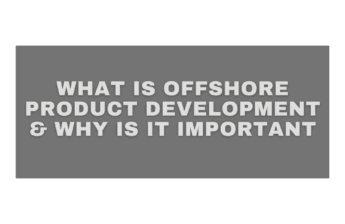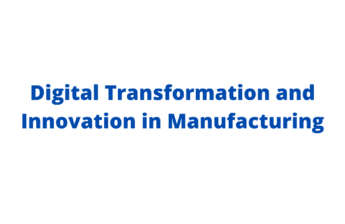The wake-up call happened during a retail platform redesign when our client’s usability testing revealed a harsh truth. Users couldn’t navigate the interface intuitively because every section used icons from different design systems. One tester commented: “I keep getting confused because nothing looks like it belongs together.” That feedback forced me to confront my scattered approach to visual assets.
Icons8 entered my workflow during the aftermath of that project. Five years of consistent use across retail platforms, educational software, and enterprise dashboards revealed the profound impact of systematic icon management. This platform transformed my understanding of visual coherence in digital product design.
Contents
- 1 Technical Foundation That Engineers Respect
- 2 Design Language Coherence That Scales
- 3 Seamless Tool Integration
- 4 Intelligent Search That Predicts Needs
- 5 Scalable Organization Architecture
- 6 Extended Asset Universe
- 7 API Access for Advanced Implementation
- 8 Financial Investment and Value Analysis
- 9 Usage Analytics from Extended Experience
- 10 Technical Implementation Considerations
- 11 Platform Limitations and Challenge Areas
- 12 Quality Assurance and Content Standards
- 13 Strategic Adoption and Implementation Planning
- 14 Comprehensive Impact Assessment
Technical Foundation That Engineers Respect
Icon vendors usually treat SVG creation as a weekend hobby project. Download their offerings and encounter structural nightmares—nested elements without purpose, random coordinate transformations, and naming conventions that suggest dartboard selection. Icons8 approaches vector development with engineering precision.
Files open revealing logical organizational schemes. Components carry descriptive identifiers explaining their actual purposes. Element clustering follows design rationale rather than software quirks. When animation demands arise, or optimization becomes critical, you manipulate intentional structural elements instead of reverse-engineering accidental markup.
This organizational rigor becomes essential during enterprise-scale developments. Interface systems built with Icons8 assets maintain coherent patterns across complete product suites. Automated compilation processes handle the structured markup efficiently without preprocessing struggles. Performance tuning proceeds logically when the underlying architecture demonstrates clear intentionality.
Their format spectrum addresses genuine production demands without quality compromises. PNG exports manage transparency correctly without border artifacts. PDF files maintain vector fidelity for print production workflows. Even their typeface implementations—though icon fonts appear increasingly obsolete—circumvent the rendering catastrophes typical of most font-based solutions.
Design Language Coherence That Scales
Icon marketplaces typically operate like digital swap meets where individual pieces might catch attention, but nothing harmonizes systematically. Icons8 organized its comprehensive catalog around design families that sustain consistent visual principles across enormous asset collections.
Select their “Doodle” framework; every element follows the same aesthetic philosophy. Business representations, interface components, social platform indicators, and technical symbols—all share unified visual characteristics. This methodical strategy prevents the fragmented appearance that undermines the application of professionalism.
Validating this consistency during a learning management system requiring 320 unique icons across course creation, student progress tracking, administrative functions, and mobile learning applications confirmed the methodology’s effectiveness. Implementing Icons8’s “Cute” family throughout, we achieved visual harmony that delighted educators and students equally. User feedback specifically praised the “friendly, cohesive interface design.”
Design families contain adequate variety for comprehensive product development. Educational platforms demand extensive symbol libraries—curriculum organization, assessment tools, communication features, progress indicators, and administrative controls. Icons8 families provide this scope while maintaining stylistic consistency that competitor libraries cannot preserve across large-scale implementations.
The catalog features 58 distinct design approaches spanning ultra-simplified line work through elaborate dimensional treatments. Educational and communication collections proved invaluable during e-learning projects. Sophisticated styles serve enterprise applications effectively. Whimsical approaches suit consumer-facing products perfectly.
Seamless Tool Integration
Software compatibility determines platform effectiveness beyond collection size considerations. Icons8’s Figma plugin exemplifies professional integration—comprehensive library access within design interfaces, immediate asset insertion without conversion requirements, and automatic content synchronization reflecting new additions. This implementation operates seamlessly after enduring numerous plugins promising smooth functionality but creating workflow disruptions.
Adobe Creative Suite support varies by application complexity levels. Illustrator handles vector workflows excellently, with periodic stability challenges during extended search sessions. Photoshop integration adequately addresses basic requirements but restricts advanced composition operations. InDesign support emphasizes document workflows rather than sophisticated layout design.
Desktop applications demonstrate authentic offline capabilities. Distributed team collaborations highlighted the importance of reliable offline functionality. Icons8’s synchronization operates dependably—online modifications appear in desktop environments without manual intervention or version conflicts disrupting project flow.
Google Workspace integration serves business documentation needs effectively. Asset quality maintains high standards consistently, but workflows target content development rather than professional design applications. The target demographic differs from interface designers and creative professionals.
Intelligent Search That Predicts Needs
Keyword searches handle specific concepts effectively. Type “e-commerce,” and shopping symbols, payment icons, and transaction indicators appear. Enter “learning” and education symbols, book representations, and knowledge graphics surface. Processing algorithms manage related terminology thoughtfully—”education” and “academic” produce similar result collections.
Conceptual searching demonstrates sophisticated interpretation abilities. Query “innovation” and creativity symbols, lightbulb representations, and breakthrough graphics emerge. “Collaboration” surfaces teamwork icons, communication symbols, and partnership representations. These contextual associations frequently reveal valuable alternatives beyond original concept specifications.
Visual recognition functions remarkably well. Upload application screenshots, and appropriate interface elements will appear. Submit product imagery and relevant category symbols surface. Accuracy correlates with image simplicity—complex visual arrangements challenge the analysis algorithms—but clear photographs generate surprisingly precise recommendations.
Categorical organization follows intuitive frameworks rather than arbitrary groupings. Educational concepts cluster with academic and learning symbols. Equipment types and interface functions organize technology sections. Operational context and usage scenarios group business platforms. This structure supports exploration when precise requirements remain flexible.
Advanced filtering provides practical workflow solutions through meaningful options. File format specification, color scheme coordination, and thematic classification—these parameters effectively refine results rather than randomly reorganizing them. Color filtering proves especially useful when brand guidelines mandate specific palette compliance.
Scalable Organization Architecture
Personal collection systems address coordination challenges across multiple clients and extended project timelines. Interface mechanics follow standard interaction principles—drag assets into organized groups, arrange using preferred logical structures, and share configurations with collaborators when teamwork requires coordination.
The organization encompasses thirty-one active collections spanning clients, development stages, and experimental initiatives. System performance remains robust despite organizational complexity. Collection search operates reliably. Batch processes like group downloading or sharing link generation execute consistently without processing interruptions.
Sharing mechanisms eliminated multiple client approval obstacles. Review cycles accelerated when curated asset selections could be distributed immediately rather than managing file transfer procedures. Team coordination improved when everyone accessed standardized, organized libraries instead of searching through distributed individual downloads.
Automated collection features streamline organization for concentrated project management. Pin active project collections and newly acquired assets are automatically directed to designated locations. This automation minimizes administrative overhead while managing multiple simultaneous client engagements.
Extended Asset Universe
Icons8’s evolution beyond traditional iconography created unexpected productivity advantages. Illustration collections maintain identical consistency standards governing their icon families. Recent healthcare applications requiring synchronized icons and illustrations discovered everything available in a matching visual framework, eliminating vendor management complications.
Photography resources target practical design applications rather than competing with conventional stock libraries. Background-removed subjects for interface compositions. Product elements for presentation materials. Professional environments supporting business documentation. These assets serve design workflows rather than pursuing artistic expression.
Audio collections cover typical background sound requirements—business presentations, product showcases, and educational materials. Quality standards function effectively for most commercial applications, though professional video production requires specialized audio services. Integration with visual asset organization creates operational efficiency.
Social platform representation receives extensive treatment across multiple design families. Platform symbols appear in various implementations, from discrete footer elements to prominent interface controls. When developing interactive features requiring precise pointer feedback, options like the custom cursor in different stylistic approaches ensure user interaction clarity while maintaining design consistency throughout the application experience.
API Access for Advanced Implementation
Programmatic access facilitates sophisticated integrations and workflow automation development. Documentation addresses standard implementation approaches with working code examples covering everyday development situations.
Recent consulting engagement included API integration within a content management platform, allowing editorial teams to search and embed icons directly inside their publishing workflows. The system managed query processing, metadata retrieval, and asset distribution without requiring independent licensing arrangements or authentication complications.
Usage management prevents system misuse while ensuring adequate access for legitimate development purposes. Response structures follow JSON conventions with detailed metadata covering licensing conditions, technical specifications, and asset relationships. Error handling follows HTTP protocols, streamlining integration development processes.
Notification systems deliver real-time alerts when collection contents are modified, or new assets satisfy specified parameters. This automation supports applications requiring current asset availability without polling overhead or manual refresh procedures.
Financial Investment and Value Analysis
Free access incorporates limitations that eliminate most commercial applications. Attribution demands conflict with client branding expectations and professional presentation standards. Resolution constraints prevent print production quality. Format restrictions complicate commercial workflow requirements.
Monthly subscriptions eliminate operational restrictions while delivering comprehensive library access. At $15 monthly, expenses compare advantageously against freelance icon development or individual asset collection purchases. Enterprise pricing addresses bulk licensing and organizational agreements for larger development teams.
Educational organizations receive suitable pricing frameworks. Students gain enhanced free access to supporting academic projects while institutions can acquire subscriptions enabling curriculum development and professional training support.
Unused download allowances accumulate across subscription periods, accommodating variable usage patterns typical in design work. Slower months preserve allowances for intensive project phases. This accumulation prevents inefficient situations where you fund unused access while depleting resources during peak development periods.
Usage Analytics from Extended Experience
Monitoring consumption patterns across fifty-one months exposed interesting behavioral trends. Interface system construction consumed maximum download quantities—establishing visual frameworks requires numerous related icons to maintain a consistent appearance. Enterprise application development ranked second, with business software and productivity tools driving steady asset demands.
Project implementations averaged 19-38 icon downloads depending on application complexity and functional requirements. Healthcare platforms require more assets than informational websites. Gaming applications needed fewer total icons but demanded multiple style variants supporting different user interaction scenarios.
Collaborative effectiveness improved substantially after establishing shared collection protocols. Asset discovery duration decreased from approximately 20 minutes per icon to roughly 9 minutes. Development cycles shortened when teams operated from uniform organized resources rather than scattered individual asset repositories.
Technical Implementation Considerations
Performance enhancement required focus during large-scale deployments. Icon sprite techniques reduced server requests and improved loading speeds but demanded building system configuration for automated generation processes. A clean SVG structure enabled sprite development without complex preprocessing.
Accessibility implementation benefited from consistent naming standards and logical markup organization. Assistive technologies function more effectively with semantic identification rather than auto-generated labels. Color contrast validation remained essential across design families and background color combinations.
Content delivery enhancement performed well with Icons8 resources. Standard compression handled file formats efficiently without special accommodations. CDN caching functioned normally without compatibility problems affecting distribution performance.
Platform Limitations and Challenge Areas
Specialized industries encounter coverage deficiencies despite comprehensive library scope. Scientific instrument interfaces, aerospace control displays, and specialized manufacturing systems—these sectors often require custom development regardless of generic resource quality.
Cultural factors influence international project development. Icon interpretations vary across geographic regions, and Western design principles may not translate appropriately to global markets. Projects serving diverse populations require thoughtful symbol selection and cultural sensitivity assessment.
Search capabilities occasionally produce unexpected results for abstract concepts or highly technical terminology. Category navigation provides more dependable discovery when keyword searches cannot locate appropriate options for specialized requirements.
Version control limitations impact teams handling extended development timelines. While the platform monitors recent changes, it does not preserve comprehensive historical versions for projects requiring specific design iterations over prolonged periods.
Quality Assurance and Content Standards
Editorial supervision differentiates Icons8 from contributor-based platforms where quality varies between individual creators. New content undergoes evaluation, ensuring compliance with established guidelines and technical specifications.
Pixel-precise scalability receives emphasis across all categories and style groups. Icons preserve crisp rendering at multiple sizes and display densities. Quality oversight extends to print applications where vector precision becomes vital for professional output.
Content evaluation procedures assess aesthetic consistency alongside technical conformance. This supervision maintains collection unity as volume increases, preventing quality deterioration common in rapidly expanding libraries without systematic oversight.
Strategic Adoption and Implementation Planning
Organizations implementing Icons8 should develop usage guidelines preventing inconsistent application across team members. Style selection criteria should correspond with brand standards and project specifications. Documentation minimizes coordination expenses while preserving design discipline.
Training should encompass search methodologies, integration procedures, and compliance requirements. Team coordination advances through shared collection administration and standardized organizational practices across initiatives.
Periodic assessment ensures ongoing compatibility with developing requirements and brand evolution. As design systems mature, needs frequently transition toward specialized approaches or custom development solutions.
Comprehensive Impact Assessment
Extensive practical testing across varied project categories demonstrates Icons8’s substantial benefit for organizations confronting asset coordination difficulties and consistency demands. Technical excellence, systematic structure, and practical integration features address common workflow obstacles effectively.
The platform minimizes asset searching while enhancing visual harmony across projects and client deliverables. For organizations where icon consistency generates workflow complications or presentation issues, subscription expenses validate themselves through efficiency gains and quality enhancements.
Nevertheless, asset collections cannot substitute design expertise or remove custom solution requirements. Sophisticated projects require thoughtful execution and periodic custom development, regardless of available resource excellence or comprehensiveness.
Optimal value serves teams managing multiple projects demanding consistent visual approaches, marketing departments administrating brand resources across different contexts, and organizations where presentation quality justifies systematic asset administration over improvised resource acquisition methods.






